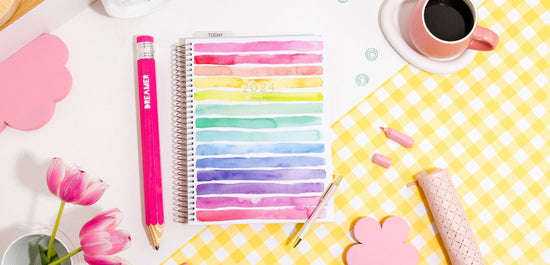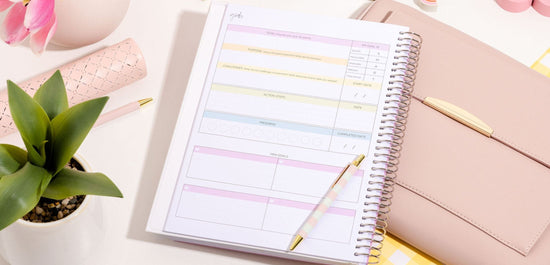How To Set Up Your Teacher Planner For A Year Of Success
Hey teacher!
In this blog we are chatting all about setting up your teacher planner!
Here, we delve into the art and science of organising your teacher planner to optimise your teaching experience.
From goal setting to incorporating essential dates, from crafting effective to-do lists to maximising the utilisation of planning pages, we cover it all.
But remember, it's not just about being efficient; it's also about enjoying the process.
So, let's dive in, get organised, and have some fun along the way!
1. Set Your Goals
The first step is to articulate your goals for this term. These objectives may include work-related aims, teaching aspirations, or personal growth targets.
We place significant value on utilising the goal-setting page within our teacher planners.
When setting these goals, it's crucial to adhere to the S.M.A.R.T. criteria: they should be Specific, Measurable, Achievable, Relevant, and Time-bound.
Understanding your goals will significantly aid in planning your week, month, and term with enhanced clarity and purpose.

2. Add In Important Dates Into Your Teacher Planner
Step two involves adding in all of the important dates. These could include staff meetings, lunch duties, or school events such as the swimming carnival.
Any dates that you know in advance should be included. We prefer to start by adding these to the monthly overview as it simplifies the process of getting everything down on paper and out of our heads and email inboxes.
When it comes to transferring these dates into your weekly or daily view, don't forget to make use of stickers. This saves time, especially for repetitive events like staff meetings.
Now it's time to add in the enjoyable stuff: family and friends' birthdays, anniversaries, and any upcoming holidays you may have planned.

3. Create A To Do List.
The third step is to create a to-do list. Do you have classroom tasks that need to be completed monthly, weekly, or fortnightly?
Create a to-do list for these tasks. This helps us remember what tasks need to be done and when.
You can add them into the week they need to be completed or keep them in the notes section to refer back to as needed.
For more tips on setting up your teacher planner for the week, check out this blog post.
4. Utilising Planning Pages
Step 4 emphasises utilising any additional planning pages in your teacher planner. We understand the significance of staying on top of student data.
We highly recommend using the student record pages in our planner as they make it simple and easy to access this information. Setting up this section at the beginning of the year with all our students' names makes it super easy to stay on track from day one.
Additionally, it's crucial to track your professional development. Nobody wants to scramble through emails or double-check times and dates when it's time to report on our PD.
Make sure you have a dedicated section in your teacher planner for this purpose to keep everything organised and accessible.

5. Have Fun With It.
The last step is to make planning enjoyable. Consistency in planning is crucial, and it should be something that serves you and brings enjoyment.
Bright highlighters, stamps, and stickers can add a fun element to your planning process. Explore our range of vibrant stationary for some inspiration.
Discover what helps make planning enjoyable for you, and build from there. After all, when planning is enjoyable, you're more likely to stick with it consistently.
Image by Miss McDonald from @missmcdonaldsfarm
From setting SMART goals to incorporating important dates, creating to-do lists, and utilising planning pages effectively, we've covered essential aspects to help you stay organised and focused throughout the year.
Remember, while staying organised is important, it's equally vital to make the process enjoyable. Whether it's through using vibrant highlighters, stamps, or stickers, find what works for you to infuse fun into your planning routine.
With these strategies in place, you're well-equipped to make the most out of your teacher planner and enhance your productivity in the classroom.
PS: Want more fun tips and free resources for your classroom? Subscribe to our email list for a treasure trove of exciting ideas delivered straight to your inbox! Click here to subscribe














Leave a comment